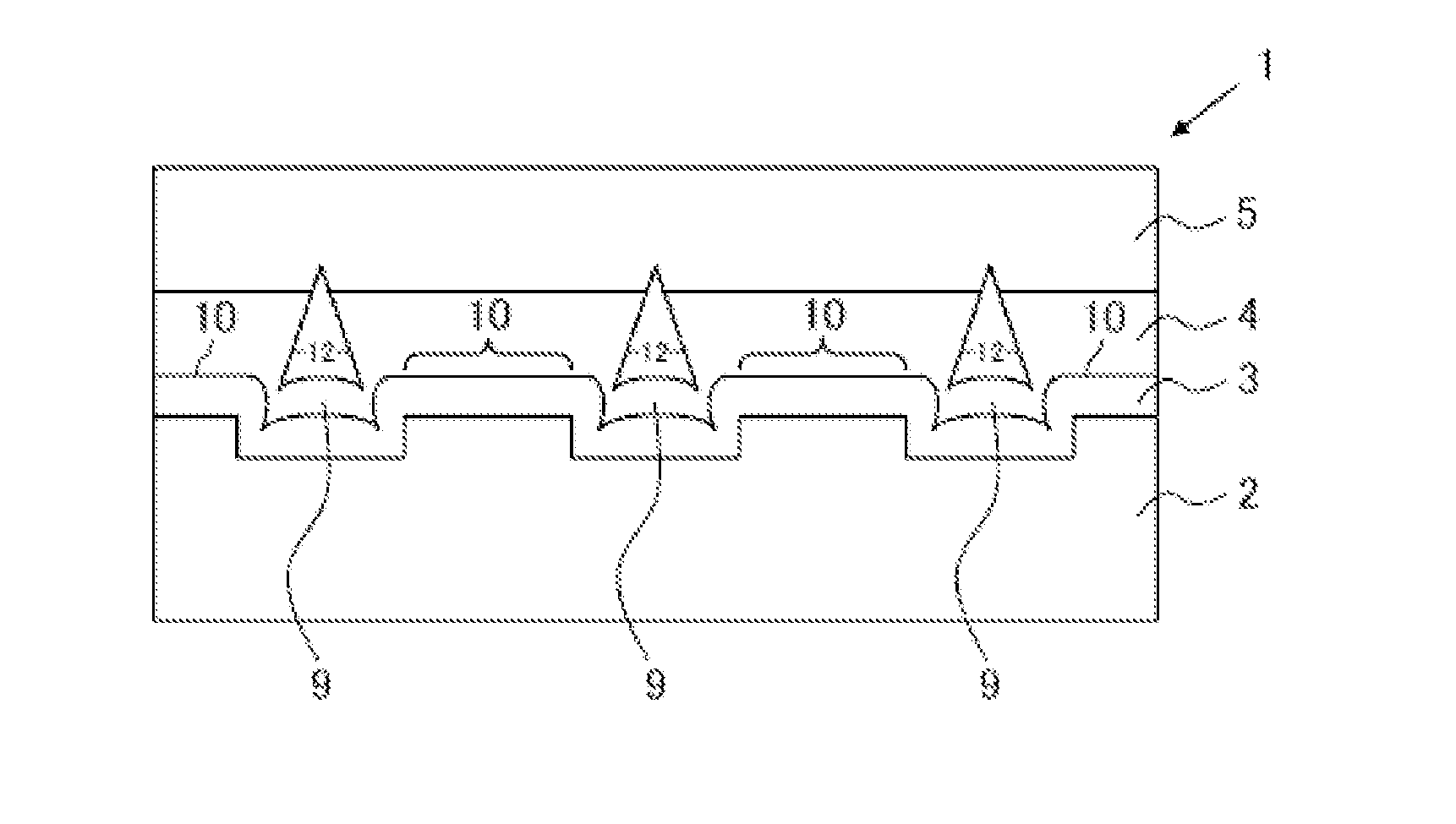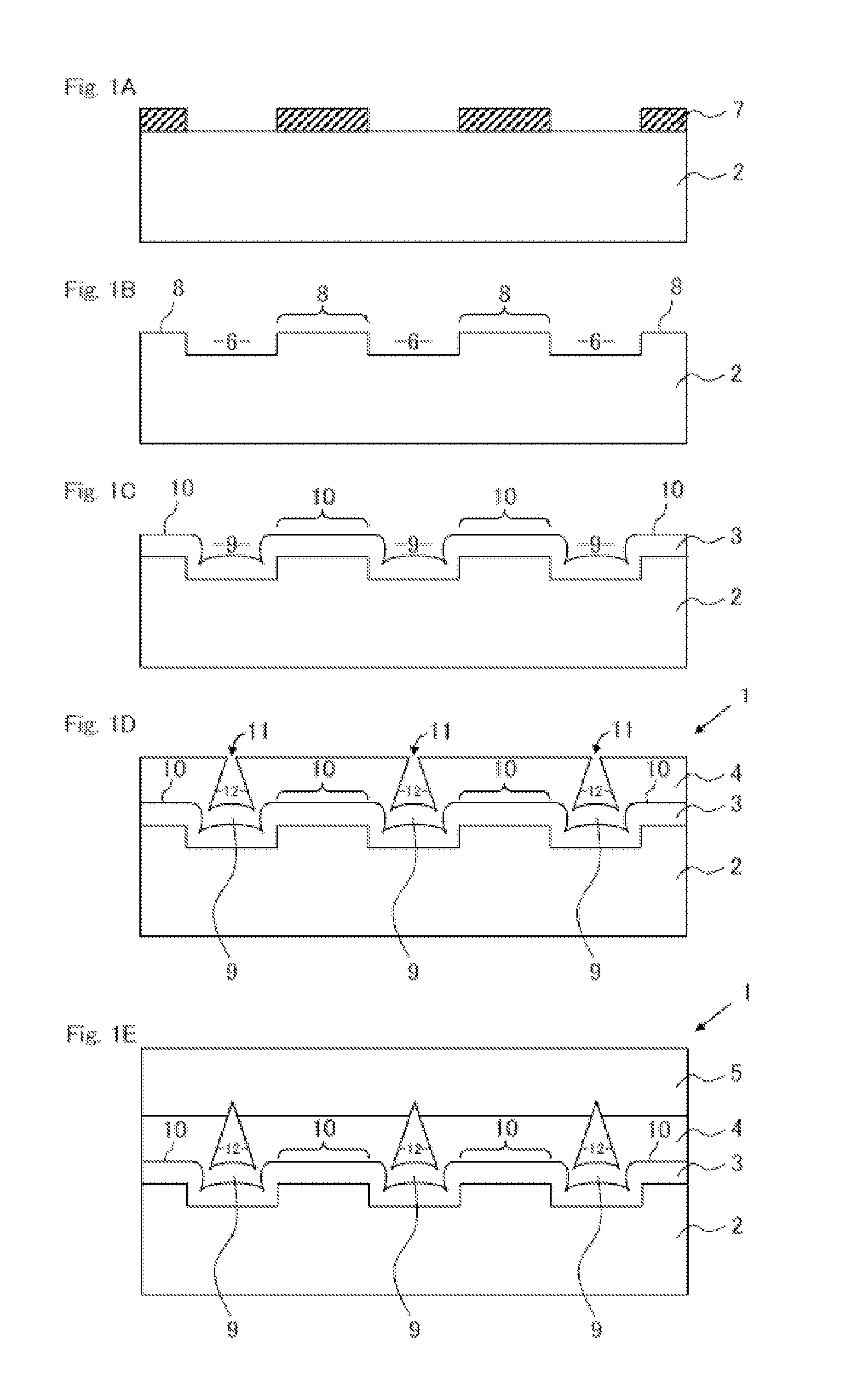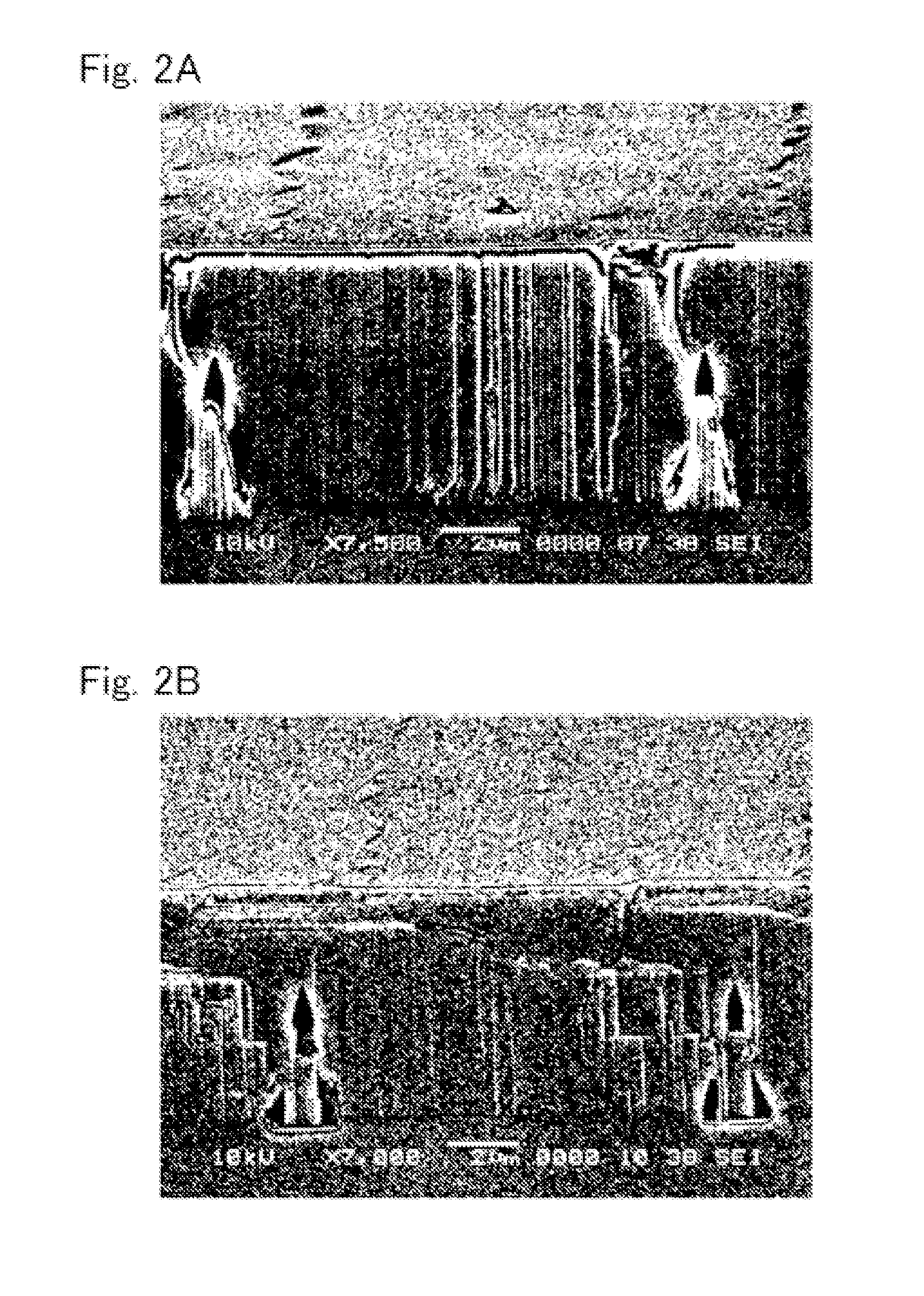Method of Producing Template for Epitaxial Growth and Nitride Semiconductor Device
a semiconductor device and epitaxial growth technology, applied in the direction of crystal growth process, polycrystalline material growth, semiconductor laser, etc., can solve the problems of increasing manufacturing costs, reducing output, and difficult processing of sapphire substrates, so as to reduce threading dislocation density , the effect of easy optimization
- Summary
- Abstract
- Description
- Claims
- Application Information
AI Technical Summary
Benefits of technology
Problems solved by technology
Method used
Image
Examples
examples 2 to 4
[0077]FIGS. 6A and 6B, FIGS. 7A and 7B, and FIGS. 8A and 8B show the SEM images (cross-sectional views (A) and bird's-eye views (B)) of Examples 2 to 4 in sequence. In Example 2, the width, interval, and depth of the grooves 6 formed on the surface of the sapphire substrate 2 are 2 μm, 5 μm, and 0.3 μm, respectively; in Example 3, the width, interval, and depth are 2 μm, 10 μm, and 0.3 μm, respectively; and in Example 4, the width, interval, and, depth are 3 μm, 5 μm, and 0.3 μm, respectively, so that the sapphire substrates 2 have different recessed-and-protruded structures thereon. In Examples 2 to 4, the growth conditions (growth temperature and flow ratio) of the initial-stage AlN layer 3, the first ELO layer 4, and the second ELO layer 5 are set to be the same, respectively. The thicknesses of the initial-stage AlN layer 3, the first ELO layer 4, and the second ELO layer 5 are 1.5 μm, 1.8 μm, and 1.8 μm, respectively, in Example 2; the thicknesses are 1.5 μm, 1.8 μm, and 2.3 μm...
example 5 and example 6
[0083]FIG. 11 shows the SEM image (bird's-eye view) of Example 5. FIG. 12 shows the differential interference microscopic image showing the state where the recess upper region is not completely covered after the first ELO layer 4 of Example 6 is formed. In Example 5 and Example 6, the width, interval, and depth of the grooves 6 formed on the surface of the sapphire substrate 2 are 2 μm, 10 μm, and 0.3 μm, respectively. The growth conditions (growth temperature and flow ratio) of the initial-stage AlN layer 3, the first ELO layer 4, and the second ELO layer 5 are set to be the same, respectively. The thicknesses of the initial-stage AlN layer 3, the first ELO layer 4, and the second ELO layer 5 are 1.6 μm, 2.1 μm, and 4.5 μm, respectively, in Example 5, and are 1.3 μm, 1.8 μm, and 1.5 μm, respectively, in Example 6. The void height of Example 5 is 3.7 μm. The Al molar fractions x of the second ELO layer 5 in Example 5 and Example 6 are 0.9, respectively.
[0084]Example 5 is different f...
PUM
 Login to View More
Login to View More Abstract
Description
Claims
Application Information
 Login to View More
Login to View More - R&D
- Intellectual Property
- Life Sciences
- Materials
- Tech Scout
- Unparalleled Data Quality
- Higher Quality Content
- 60% Fewer Hallucinations
Browse by: Latest US Patents, China's latest patents, Technical Efficacy Thesaurus, Application Domain, Technology Topic, Popular Technical Reports.
© 2025 PatSnap. All rights reserved.Legal|Privacy policy|Modern Slavery Act Transparency Statement|Sitemap|About US| Contact US: help@patsnap.com



